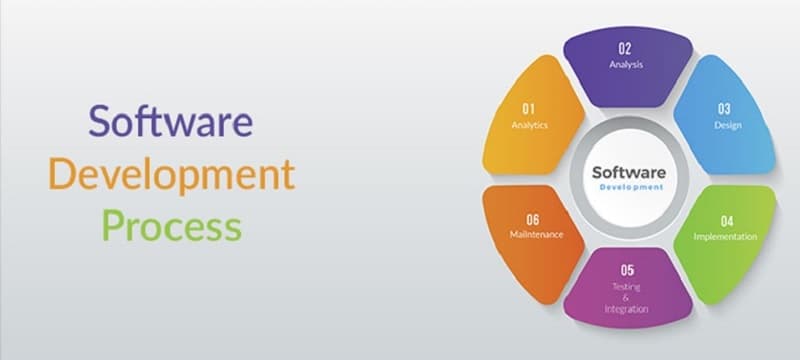Software Development Process: How to Choose the Right Process for You

TechsPlace | Great software always starts with a clear process and plan. Fortunately, so many software app development processes are available for you to choose from. The daunting task would be, which among the processes to choose?
This guide goes over the software development lifecycle basics, why understanding it is critical, and determining the pros and cons of these processes. These days, software developers have a greater need to make insightful and astute decisions about each fine app development. The decisions fringes in the features and functionalities choices, the SLDC model chosen, and the criteria for hiring software development providers.
The Best Software Development Processes
Through the years, the number of the software development process was formalised to handle projects that are getting more complex. But, which process is the right one for you?
The process you use ultimately boils down to the size of your project, your goals, the development team, and other factors.
- The Waterfall Method:
The waterfall process, or the ‘linear sequential model’ is one of the most traditional and oldest models for software development. Waterfall, in its most basic form, follows every step of the software development process life cycle in sequence. You must finish each one by sequence before moving towards the next.
In the most practical apps, however, the phases overlap a bi, with information and feedback passed between them.
It’s good for: Development teams with rigid documentation requirements and structures.
Because of its large up-front planning time and rigid structure, the Waterfall method is best when your requirements, goals, and tech stack are not likely to change drastically during development. The Waterfall process, in more practical terms, is best for bigger companies, such as government agencies for instance, which require documentation and sign-offs on all scope and requirements before a project commences.
It’s not good for: It’s not great to use if you need user feedback mid-stream, testing out a new product, or want to be more dynamic.
Although pretty straightforward, the biggest drawback of the process is its lack of flexibility. Along the way, you won’t be building and testing prototypes or MVPs, and then change your mind as you go along. Unless you have tightly written scope, you could end up committing the wrong way and not realizing it until the day of launching.
- Iterative and Incremental:
Both are the middle-ground between Waterfall’s upfront planning and structure, and Agile’s flexibility. Although they adhere to building small software and making them available for feedback from users, their difference lies in what you build on each release.
With the Iterative Process, every version released includes a version of all planned features. In the Incremental process, each ‘incremental’ product release adds a simple form of function or feature.
It’s perfect for: Developers that require more flexibility and with clear requirements compared to the Waterfall process. Both add a level of flexibility to develop, without throwing the overall plan away. For huge projects with defined scopes, these processes are great choices.
Providing early feedback about the core feature is what the Incremental process is all about, which helps to validate the business case right away. Users get to have an early look at what the whole product would be for more focused and better feedback with the Iterative model.
It’s not good for: Teams that don’t have a clear long-term tech plan. Both models, the iterative approach, in particular, need heavy architecture-building and planning at the start.
- Agile and Scrum Method:
The Agile process, and its most popular method, Scrum, go for a dynamic and iterative development approach. In contrast to the strict Waterfall process and sequential flow, Agile works in sprints of a couple of weeks to a couple of months to create and release software for customer feedback. Regular release, moving fast, and responding to the true needs of a user even if it goes against the initial plan is what Agile is all about.
Meaning, there’s no need for you to have a full requirements list before starting work. You move in one direction instead, with the understanding that you’d be changing course as you go forward.
It’s good for: Dynamic teams that do continuous product updates. Thanks to the user-focused and dynamic features, Agile is favoured by most tech companies and startups testing new products or performing continuous updates. As doing small releases and gathering user feedback becomes easier, Agile enables organizations to move more rapidly and test theories without putting to risk their livelihood on a major release that users don’t like.
It’s not good for: Development teams with very tight timelines and budgets. The dynamic nature of agile means projects could go over their initial timeframe or budget easily, creating conflicts, or could be derailed due to mismanagement. Meaning, it’s not the best option for resource-strapped or risk-averse teams.
- Spiral:
The Spiral method is a combination of the V-shaped process’s focus on risk assessment and testing, with the incremental Iterative nature, Agile, and Incremental. The next step after putting a plan in place is to do an in-depth analysis of the risk to check out areas with most risks or errors.
It’s good for: The obvious core purpose of this process is to minimize risk. This path makes sense if you’re working on a huge and critical project, which requires a high level of documentation, as well as validation. Moreover, it’s also advantageous if a custom is not entirely sure about the requirements and expects major edits during development.
It’s not good for: It’s not a great option for most people. Even if it’s fantastic in theory, Spiral is rarely practised due to the expenses associate and the time for such a calculated approach. Rather, it’s used mostly as an example of how to critically think regarding the iterative approach.
- V-Shaped:
This model is taken on the Waterfall method, which causes its biggest downfall, which is a lack of testing. Every step of the V-shaped model is followed by a stringent ‘validation and verification’ phase wherein requirements are tested before moving on, instead of working through the process in sequence.
It’s good for: Teams that work on a tight scope and smaller projects. It’s great for small projects with relatively clear scope and requirements. It has ample testing opportunities as you move along.
It’s not good for: Development teams that want early input and more flexibility from users. Even the best-laid plans go astray often. The drawback to the process is the inverse of positive features.
Conclusion
To build your software product, you should make the right decisions in terms of the software development process, right from the very start.
Ayna Shane is an analyst in a Software app development company Tatvasoft Australia. She is working alongside the development and sales team for project development.





